
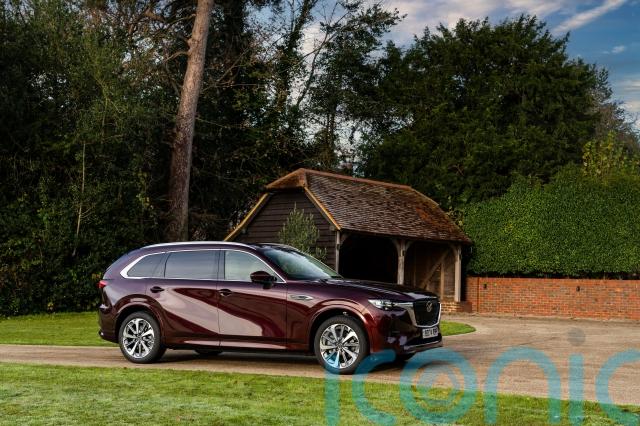
If you’ve wanted a brand new seven-seater Mazda for the past decade or so, you’ll have been disappointed, as the firm hasn’t offered one. Instead, like nearly every other carmaker, Mazda has been focussing on SUVs.
But good news – Mazda has taken its posh CX-60 SUV, stretched it a bit, and squeezed in two extra seats to create a brand new seven-seater. This is our first time behind the wheel.
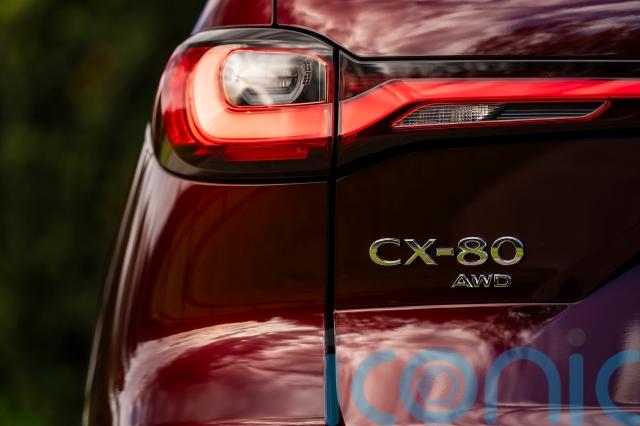
The resulting CX-80 allows Mazda to rub shoulders with other carmakers who make large family SUVs like Hyundai with its Santa Fe, but also enables itself to get a step closer to taking on German premium brands like BMW – the latter being a long-term goal for Mazda. Instead of creating a brand model, though, Mazda has taken the more sensible and economical route and developed its existing mid-sized CX-60.
But this is not just a case of Mazda pressing the ‘X2’ button on its design office photocopier, as the CX-80 also debuts a number of chassis tweaks to address criticisms levelled at the smaller model.
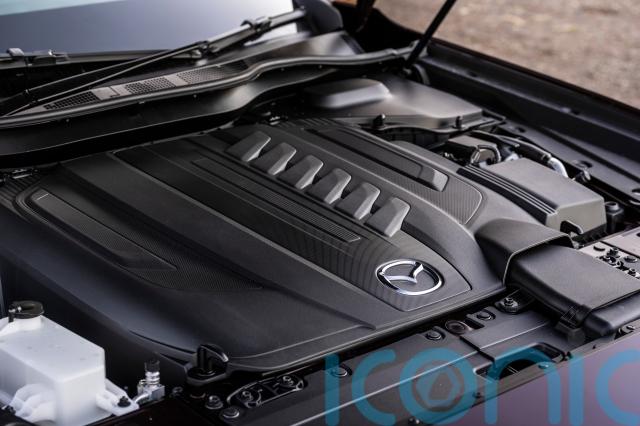
You get the same choice of engines as the smaller CX-60, so there’s a plug-in hybrid and good old-fashioned diesel power.
For the PHEV, it’s a 2.5-litre four-cylinder petrol engine which works with a 173bhp electric motor, and this in turn is fed by a 17.8kWh battery. Total power is a chunky 323bhp and 500Nm of torque, meaning this rather large SUV can dash to 60mph in just 6.8 seconds. Impressive as that is, the real appeal of the PHEV will be to company car drivers as the CX-80’s 38-mile EV range means it slots into the 12 per cent benefit-in-kind tax bracket.
The diesel is a thumping 3.3-litre, straight-six unit with a 48-volt mild-hybrid system – in which a 17bhp electric motor helps the engine when pulling away from a standstill – and has 251bhp and 550Nm on tap. Meanwhile, both engines are hooked up to eight-speed automatic gearboxes, get all-wheel drive and have the same 2,500kg towing limit.
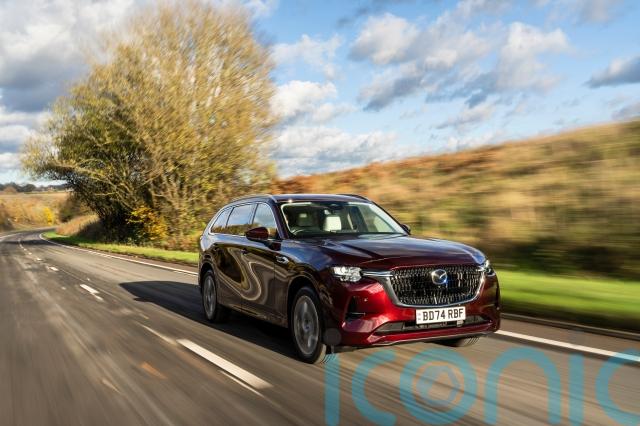
The CX-60, while sharper and more engaging to drive than many of its peers, drew criticism for its hard and sometimes unforgiving ride. The CX-80 debuts some chassis tweaks to partly cure that problem (which will be rolled out on CX-60s from March this year), but also to ensure the car has the refinement and handling to match a larger, seven-seater SUV. The changes have mostly worked, as the CX-80’s ride is softer and more forgiving. The steering is communicative and the whole car feels more agile than equivalent seven-seater SUVs. However, rivals do trade this handling agility for a better ride, which probably is more sensible considering the car’s purpose.
The PHEV glides around nicely on EV power, even if the motor does whine, and there’s plenty of punch when both the engine and electric motor work together. However, once that battery is depleted, the petrol engine feels a little too coarse and strained. The diesel is still the superior unit – it trades the company car driver-pleasing tax credentials for a smoother, creamier power delivery and thumping straight-line speed. You can still coax the big 3.3 to 50mpg, though, which in the real world is better than the PHEV’s efforts unless you can religiously charge it before and after every journey.
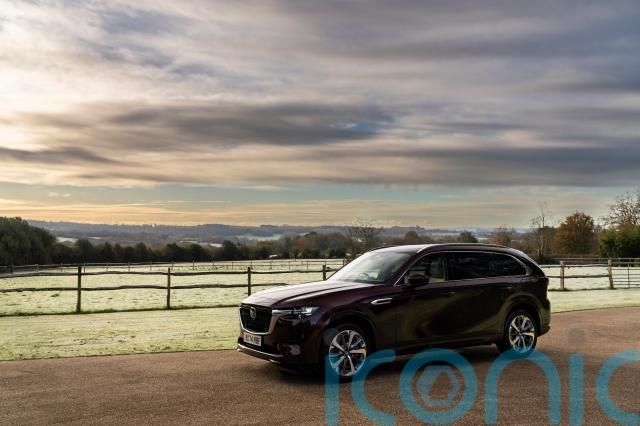
There’s no getting away from the stretched CX-60 appearance, with the CX-80’s long rear doors only exacerbating this look – in fact, the wheelbase is almost as long as a Range Rover LWB’s. It’s still a very handsome car, though, with the large grille, slim headlights, and unfussy bodywork being the highlights.
Larger wheels really do improve the proportions, and these are available on mid- and high-spec versions. The CX-80 also gets two exclusive colours – Melting Copper and Artisan Red – which really give it an upmarket look.
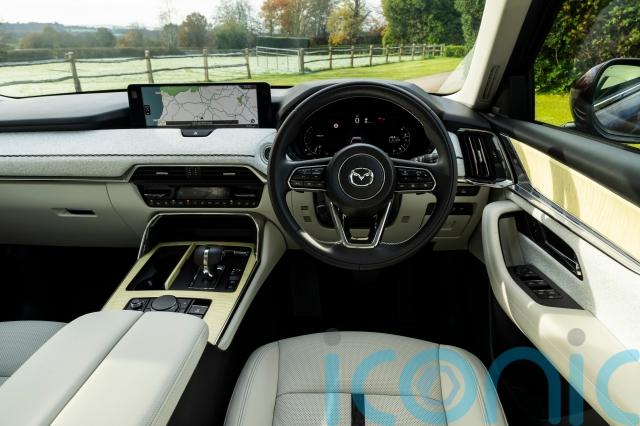
Up front, you’d think you were in the CX-60, as there’s the same wide centre console, high-set infotainment screen, and plush materials. As it’s the same cabin, the CX-80 has a large rotary knob to control the infotainment system and a row of buttons for the climate control, rather than a large distracting touchscreen.
From the front seats back, it’s all change. Usually, the CX-80 is a seven-seater, but it can be ordered with six seats should you wish. Go for this option, and the middle bench can be swapped for two individual captain’s chairs with either a gangway to the rear seats or fitted with a centre console between them for maximum limo luxury. The two rear-most seats are large enough to carry adults, which is something that not all seven-seat SUVs can manage; boot room is an impressive 258 litres with all seats in place, rising to over 1,900 litres with the rear and middle rows folded.

Mazda really hasn’t scrimped on the equipment levels with the CX-80. The range starts at £49,670 for the Exclusive-Line, which gets black leather upholstery with heated front seats, 18-inch wheels, and wireless Apple CarPlay and Android Auto. Homura, from £52,820, adds larger 20-inch wheels, a sportier looking grille and body-coloured trim, along with ventilated front and heated rear seats and rear sun blinds, while Homura Plus, for another £2,650, adds a 360-degree monitor and privacy glass.
The posh Takumi and Takumi Plus models are priced from £53,770 and £56,420, respectively. These top-of-the-line BMW- and Mercedes-baiting versions really add some flair to the pretty plain interior look of the lower models, as they get white Nappa leather seat trim, chrome detailing, blonde wood inserts, and fancy woven fabrics covering the dashboard which feature a special Japanese stitching technique called Kakenui.
The six-seater configuration with centre console is a £750 option, while Mazda charges between a £2,535 and £2,745 premium for the diesel over the PHEV.
The CX-80 is now Mazda’s range-topping model for Europe, and as such, it needs to represent the best of what Mazda can do. In many ways, the CX-80 succeeds – it’s a good looking car, which handles and goes well, and has a plush interior that’s very versatile. The diesel will be very welcome to buyers who tow regularly, as the engine’s muscle and creamy power delivery is excellent.
The CX-80 won’t be to everyone’s taste, though, as the car’s firm ride can dent some of the comfort levels families desire. Overall, the CX-80 stands out in a pretty crowded and talented market – it’s well worth considering.
Subscribe or register today to discover more from DonegalLive.ie
Buy the e-paper of the Donegal Democrat, Donegal People's Press, Donegal Post and Inish Times here for instant access to Donegal's premier news titles.
Keep up with the latest news from Donegal with our daily newsletter featuring the most important stories of the day delivered to your inbox every evening at 5pm.